Hello people? We hope you had a fabulous weekend. This past weekend, the Green Ranger Safaris team, was once again privileged to take a group of workmates to the Masai Mara. Where we were able to picture a few Mara birds.
Nature – Check out a list of articles showcasing nature’s diverse beauty…
Hello people? We hope you had a fabulous weekend. This past weekend, the Green Ranger Safaris team, was once again privileged to take a group of workmates to the Masai Mara. Where we were able to picture a few Mara birds.
Dear fellow nature lovers. This year, like all other years, has seen the Green Ranger Safaris team travel to various parts of this beautiful country we call Kenya. Today, we shall be at the spectacular Amboseli.
Hello all? 🙂 It so happens that the Green Ranger Safaris team has been working its tail off and needed a brief rest. So what did we do? We took off to Lake Elementaita – a small soda lake about 2 or 3 hour’s drive from Kenya’s capital, Nairobi, to unwind and rejuvenate. Or so we hoped at least…
Greetings, nature and animal enthusiasts, from the Green Ranger Safaris team. 🙂 Hoping you are all well! The World Cup is here once again
Wildlife is beautiful. It is a precious resource that more often than not, we take for granted.
Happy new and prosperous year 2014 from the Green Ranger Safaris team.
Hello nature lovers? Today Green Ranger Safaris wishes to highlight some of the most spectacular antelopes in Africa. Granted, most of us prefer observing game like Elephants, Buffalo, Big Cats and so on, totally ignoring other herbivores out there. Today, however, they get the spotlight … enjoy 🙂
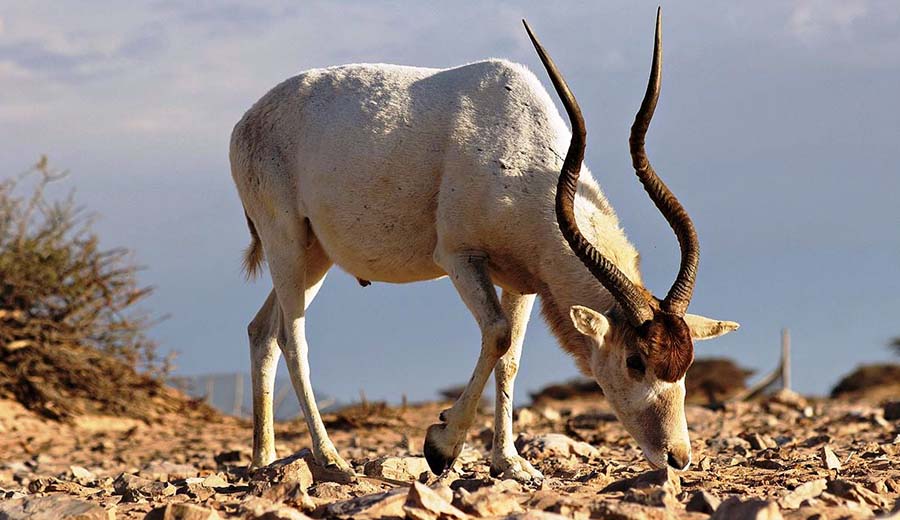
Photo courtesy of Wikipedia
The Addax, also known as White Antelopes or Screwhorn Antelopes, are critically endangered. It is suspected that there may be only about 3 of them left in the wild, but roughly 2,000 of them can be found in zoos and various ranches all over the world. They are a desert-dwelling antelope, that once ranged across northern Africa. Today, the only population is found in the Termit & Tin Toumma National Nature Reserve in Niger, that is, according to the International Union for Conservation of Nature (IUCN).
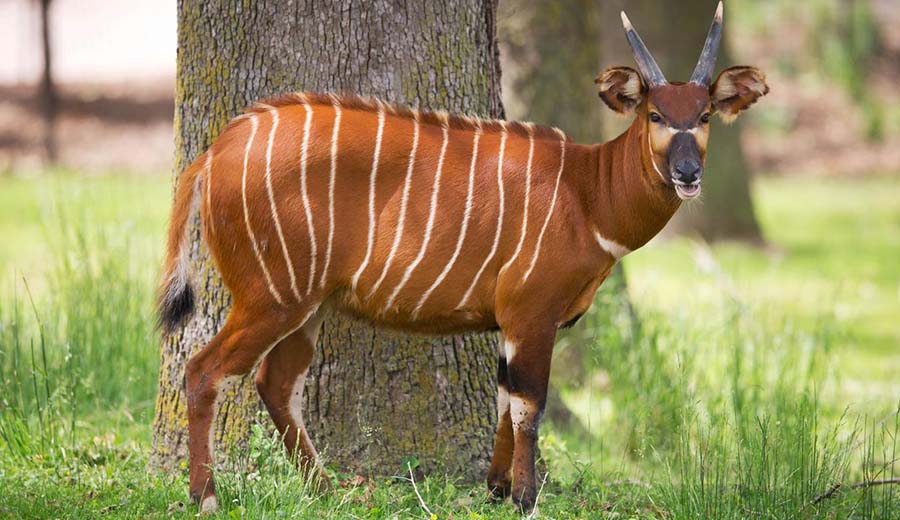
Photo courtesy of Omaha Zoo
The Bongo is a mostly nocturnal forest ungulate and is among the largest of the African forest antelope species. Bongos are only found in rainforests with dense undergrowth across tropical Africa, but are now critically endangered, like most antelopes on this list. These antelopes are classified into two subspecies: the Lowland or Western Bongo, and the far rarer Mountain or Eastern Bongo restricted to the mountains of Kenya only.
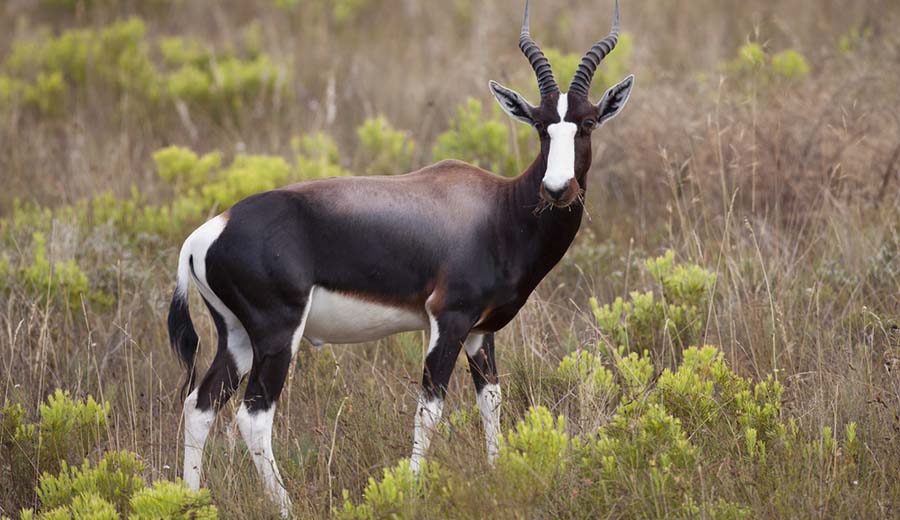
Photo courtesy of Mogens Trolle/Shutterstock
This is an antelope that is found in short-grass plains. Both sexes have horns, although the horns of rams are heavier and longer than those of ewes. There are two very distinct subspecies of this beautiful African antelope, the Bontebok and the Blesbok, both of which are no longer found in the wild, and owe their survival to their existence in game reserves, farms and national parks such as Bontebok National Park, South Africa.

Photo courtesy of Bernard Dupont
These antelopes have geometrically shaped white patches or spots on the most mobile parts of their bodies, that is, the ears, chin, tail, legs, and neck. The males have horns, which are between 10 to 20 inches long. They dwell at the forest edge. Bushbucks, like all living creatures, need water but can subsist on dew if necessary.
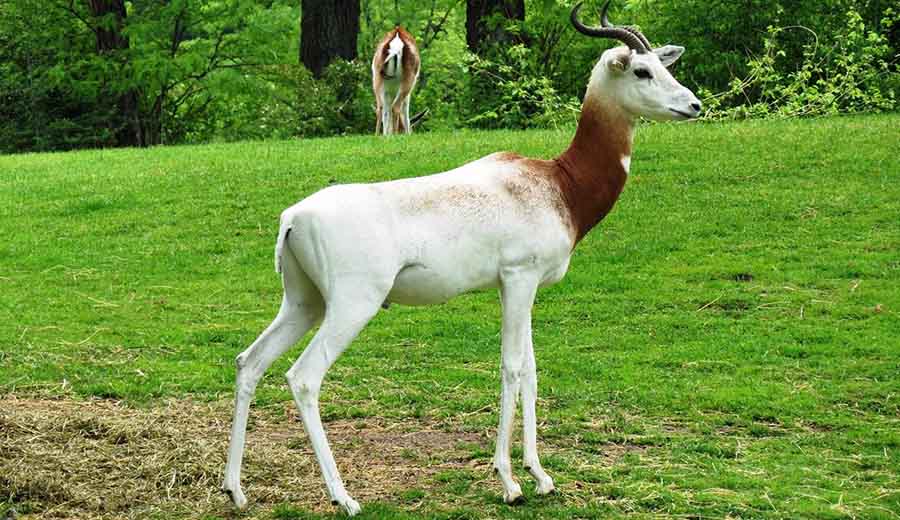
Photo courtesy of Zoo Chat
Dama Gazelles coats are mostly white, with brown patches on the neck and back. The females have more white on their coats than males. Their horns can be 14 inches long, with females having shorter horns. Dama Gazelles are the largest gazelle species. They are critically endangered and are some of the rarest gazelles with fewer than 400 individuals remaining in the wild, mainly in Chad and Sudan.
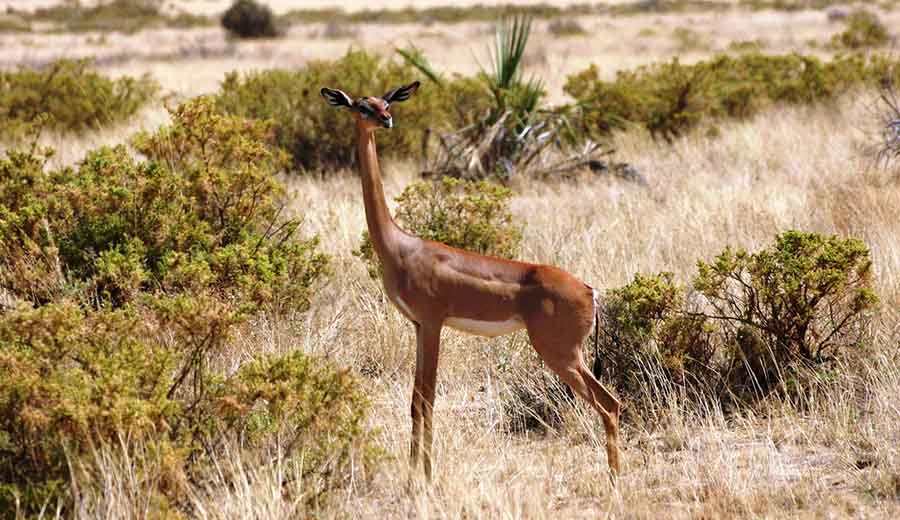
A Gerenuk looks like a cross between a giraffe and a gazelle. These interesting looking antelopes are found in Tanzania and Kenya. They never need to drink as they have adapted to hydrating themselves through the water in the leaves they eat. There are four subspecies in the Gerenuk family, each with fiery-colored coats and slender faces.
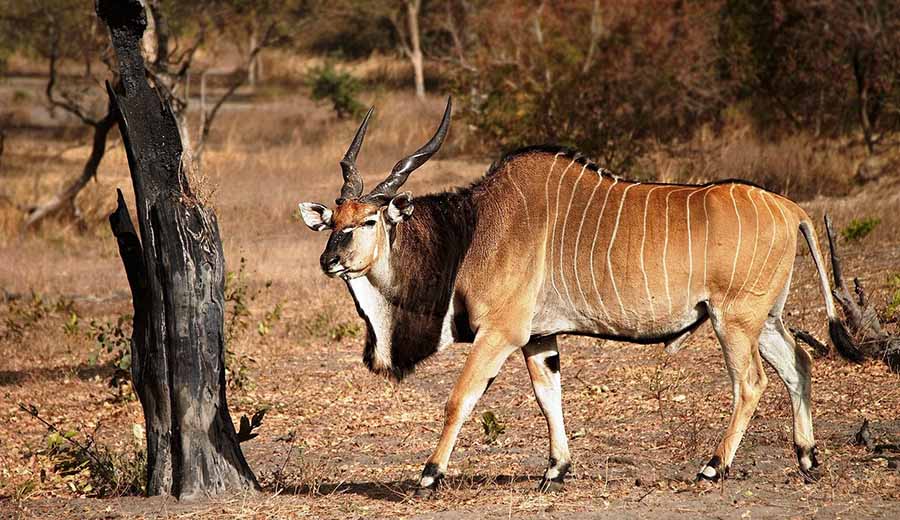
The Giant Eland is the largest of all of Africa’s antelopes, weighing close to a ton. Depending on sex, Giant Elands differ greatly in size. The Males can grow to almost double the weight of females and can reach up to 1.8 m (5.9 ft) at the shoulder. Giant Elands can move quite quickly, running at over 43 mph (70 km/h), and despite their size are exceptional jumpers, easily clearing heights of up to 1.5 m (4.9 ft).
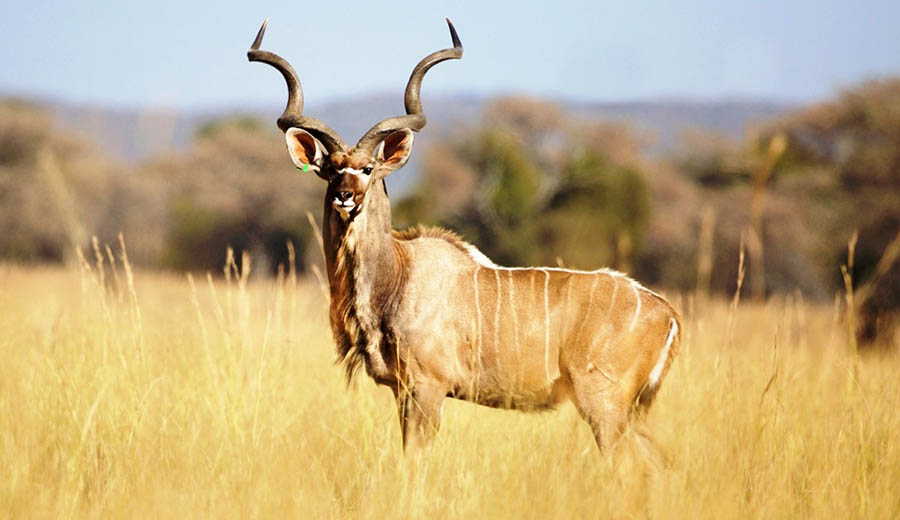
Photo courtesy of Arcon Media
Kudu antelopes are some of the largest and most impressive of all African antelopes. Despite their size, they are actually good swimmers. They occupy a wide range of habitats that contain plenty of shrubs. Kudus found in the southern part of Africa have darker coats than those found in the north. When sensing danger, Kudus first instinct is to freeze, hoping to avoid detection, but they can also run and jump well if necessary.
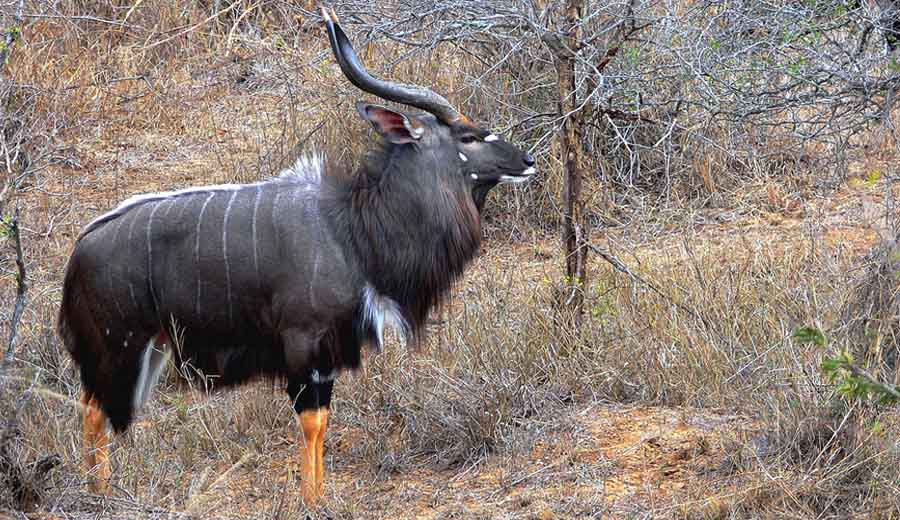
Photo courtesy of Arno Meintjes
Nyala antelopes are found in the eastern part of South Africa, in riverside thickets, dense brush and fringe forests. Male Nyalas are far larger than females, with a distinctly dimorphic color. Female Nyala antelopes have no horns. They have a specialized diet, which may be the reason why Nyala antelopes are not numerous or widely spread. The Nyala do not have the explosive running ability of the open-ground antelope and therefore must depend on melting into the vegetation to escape predators. Their white under-tail serves as a warning flag to other herd members as they bark and bound for cover upon sighting a predator.
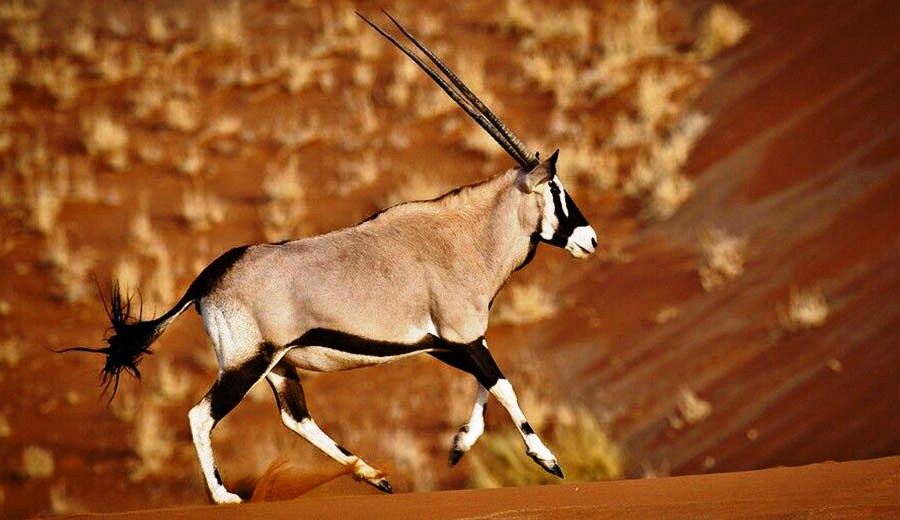
There are four species of Oryx, one of which is now extinct in the wild due to extensive hunting, but there are still few animals living in captivity. The Oryx are found in the eastern (Kenya) and southern parts of Africa, in Oman and Jordan. They live in dry, arid or semiarid areas such as deserts, savannas and steppes. Unlike other mammals, the Oryx can raise its body temperature to prevent perspiration and loss of body water during the day.

Photo courtesy of Etosha Namibia
Sable antelopes are characterized by their glossy black coats with white underparts and white facial markings. Both sexes have long horns that are ridged and curve backwards. They are extremely rare in the wild and their populations are in decline due to habitat loss and scarcity of water caused by climate change. As they grow older, Sables change color. Their calves are born reddish-brown, with virtually no markings, and as they age, the white markings appear, and the rest of the coat gets darker with age. The older the animal, the more striking the contrast.
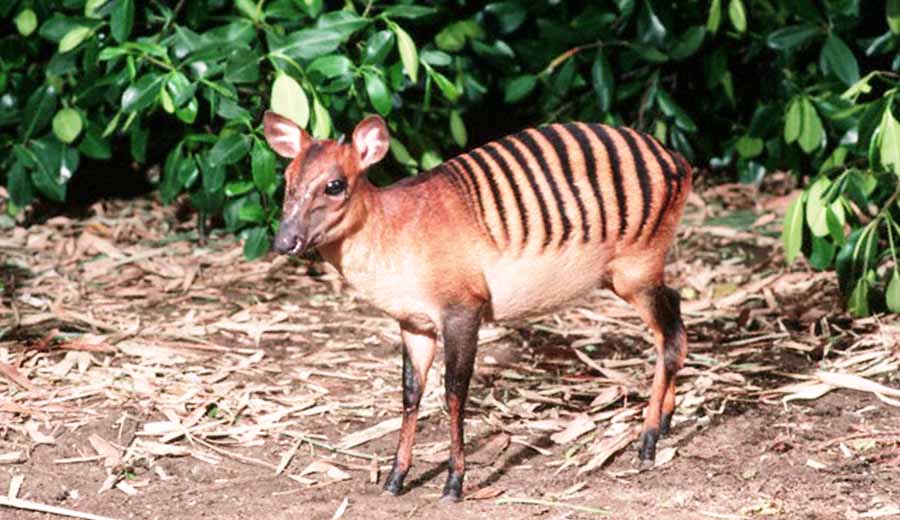
Zebra Duikers are small antelopes that are sometimes referred to as the Banded Duiker or the Stripped-back Buiker. They are found primarily in Liberia, as well as the Ivory Coast, Sierra Leone, and occasionally Guinea. Being very shy, they are rarely seen in the wild. The Zebra Duiker’s light gold or reddish-brown body is strikingly marked from the shoulders to the rump with 12-16 beautiful black (or dark brown) transverse stripes.
Those are just but a few of the beautiful antelopes that can be found throughout Africa. They are awesome and beautiful creatures indeed. So next time you are out in the African wilderness, take some time to appreciate these creatures, and get a shot of them on your camera and share it with us.
Until next time, enjoy the rest of your day… 🙂
This week’s post is about Photos that tell a story. Life can be hard in the wild, but life is so unpredictable… sometimes we see lucky escapes, sometimes we see brave fights, sometimes we see the strangest friendships. There’s never a dull moment in the African wild. Enjoy the photos and have a wildly awesome week 🙂